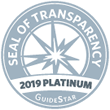The study data included demographic data, family history of cancer, how the cancer was discovered, cancer pathology data, surgery and radioactive iodine therapy data, and results of the follow-up tests. The study patients were followed for an average of 26 months (range: 6–84 months). The initial treatment consisted of total thyroidectomy and radioactive iodine therapy in 51% of patients, total thyroidectomy alone in 45%, and lobectomy alone in 3% of patients. The response to treatment and the risk of persistent/ recurrent disease was calculated using the ATA Risk Stratification System. Among the 4773 study patients, 52% were classified as having a low risk, 39% as having an intermediate risk, and 9% as having a high risk of persistent or recurrent cancer.
A decision-tree risk prediction model was used to assign a risk index for persistence/recurrence to each patient. This statistical model allows the investigation of the contribution of different patient- and cancer related features to the thyroid cancer recurrence risk. Two models were created, the first algorithm including all available variables, while the second algorithm excluded the variables used by physicians to decide whether to proceed with radioactive iodine treatment, since these variables were taken into consideration when recommending this treatment.
The two decision-tree models showed better performance as compared with the ATA Risk Stratification System. The second decision-tree model increased the sensitivity to detect structural disease from 37% to 49% in high-risk patients and improved the capacity to rule out the presence of persistence/recurrence by an additional 3% in low-risk thyroid cancer patients. Several factors not included in the ATA risk stratification system, such as age, gender, body-mass index (BMI), circumstance of cancer diagnosis, family history of thyroid cancer, surgical method, presurgical cytology result from thyroid nodule biopsy were found to affect the prediction of thyroid cancer persistence or recurrence.
WHAT ARE THE IMPLICATIONS OF THIS STUDY?
This study’s results suggest that machine learning systems using large databases can improve prediction of thyroid cancer persistence or recurrence. Inclusion of additional variables than those used in current risk-stratification systems can improve the risk assessment. This represents an important step towards precision medicine in predicting thyroid cancer recurrence.
—Alina Gavrila, MD, MMSC



